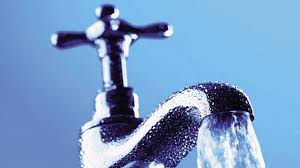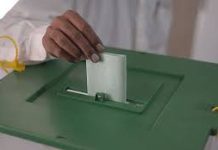By Muhammad Luqman
Water resources experts have warned that Lahore, the eastern city of Pakistan may have no drinking water by the year 2040 if the depletion of ground water continues unabated.
“The groundwater level of Lahore is depleting at a rate of 2.5 to 3 feet per year. The water table in the central parts of the city has fallen beyond 130 feet mark,” says Director General WWF Pakistan, Hammad Naqi Khan.
In the absence of rain harvesting , even during the monsoon season, hundreds of thousands cusec water goes waste and does not leach down in the aquifer due to concrete surface across the city. There were times when there were rain water drains and ponds in the city that played the role of a conduit to recharge the ground water in big cities as well as villages.
Whereas the quantum of water pumped out from the ground is much more as compared to the water that becomes part of the ground water. This scenario makes the water experts to predict that water table in the city situated even on the banks of a river may drop below 230 feet by the year 2025.
Currently, more than 160 million litres of groundwater is extracted per day through motor pumps and tube wells in addition to the amount of water used for the industrial and recreational purpose
The consumption pattern of water in the city is highly unsustainable as it is not just depleting the groundwater but also contaminating the Ravi which is the main source of water recharge in the city.
“This contamination not only threatens individual health but also to economic growth, food security and environmental sustainability in the city,” says Dr. Sultan Burq, a hydrologist.
He warned that if the present trend continues then Lahore might be without groundwater by the year 2040.
The Lahore aquifer, according to a WWF report, is a single contiguous, unconfined aquifer. Groundwater for drinking purposes is extracted from a depth of 120-200 metres (m). It is pumped for Lahore’s domestic, industrial and commercial purposes. In order to deal with the vagaries of surface water supplies, more than 10,000 tube wells have been installed for agricultural purposes. The average annual rainfall of Lahore is 715 mm. However, its recharge to groundwater in urban areas is minimal due to urbanization. In general, groundwater discharge is higher than recharge, which is the main reason for the rapid depletion of groundwater in the city. In the recent years, the re-charging of the ground water in Lahore has come to a lowest ebb due to unabated construction activity.
The way ground water in Lahore is contaminated is also a classic example of negligence on the part of the persons on the helm of the city affairs. The entire municipal waste from Lahore city is collected through a network of 14 main drains and discharged into the River Ravi without any treatment. The industrial waste is directly discharged into the canal system by 271 industrial units. These industries include textile, chemical, food processing, pulp and paper, poultry, dairy, plastic, paint, pesticides, leather, tanneries and pharmaceuticals.
The second biggest source of pollution is the Hudiara Drain. Currently, there are around 100 industries located along the Hudiara Drain, which discharge wastewater directly into the River Ravi. Most of these industries are low-polluting, with 30–35 industries, categorized as high-polluting, including textile processing units, carpet industries, tanneries, food processing units and dairies. Like smog, Indian factories across the borders are blamed for the water pollution. However, the contribution of Pakistani industrial units in this regard is also a source of worries.
In general, the groundwater quality is good near the River Ravi and gradually deteriorates in the south and southwestern direction. Many studies have found higher arsenic levels (> 50 parts per billion) in pumped groundwater in Lahore. The quality of shallow groundwater is generally considered poor as these tube wells are adversely effected by seepage from sewerage/drainage systems.
Water and Sanitation Agency (WASA) is usually blamed for all the problems being faced by water users in Lahore. WASA supplies drinking water to more than 6.0 million people by means of 484 tube wells. These tube wells are located in different areas and their depth varies between 150 to 200 m. Over time, water demand has increased from 180 litres per capita per day (lpcd) in 1967 to 274 lpcd in 2013. The total groundwater extraction from these 484 tubewells is about 2.2 million cubic metres per day (MCM/day). WASA tube wells run 14-18 hours per day and water is distributed from source to households through a network of 7,700 km long water supply lines and 600,000 connections. Only 78 per cent of households in the WASA serving area are connected to the piped water whereas in non-WASA areas this facility is available to 50 per cent of households. The remaining 50 per cent of households get water from hand pumps, public waterstand posts or directly through groundwater pumping by using small suction pumps.
The central Pakistan province of Punjab has drafted The Punjab Municipal Water Act and Punjab Drinking Water Policy, aimed to recognise, regulate and manage present and future municipal water in Lahore and Punjab. The bill even mentions a strict penalty for the violators of any standard of municipal water use and fine in case of usage of ground water for domestic use without registration with the local government.
But the work on the bill is going at a snail’s pace. “The bill and policy are licking the dust in the Local Government department.
“ The authorities will wake up only when people will be crying for water in Lahore like Karachi,” says Dr. Sultan Burq.
However, Water and Sanitation Agency (WASA) officials claim that the draft of Punjab Municipal Water Act is ready and will be presented before the Punjab Assembly for legislation. After the signature of Punjab governor, it will become law for effective use of water.















